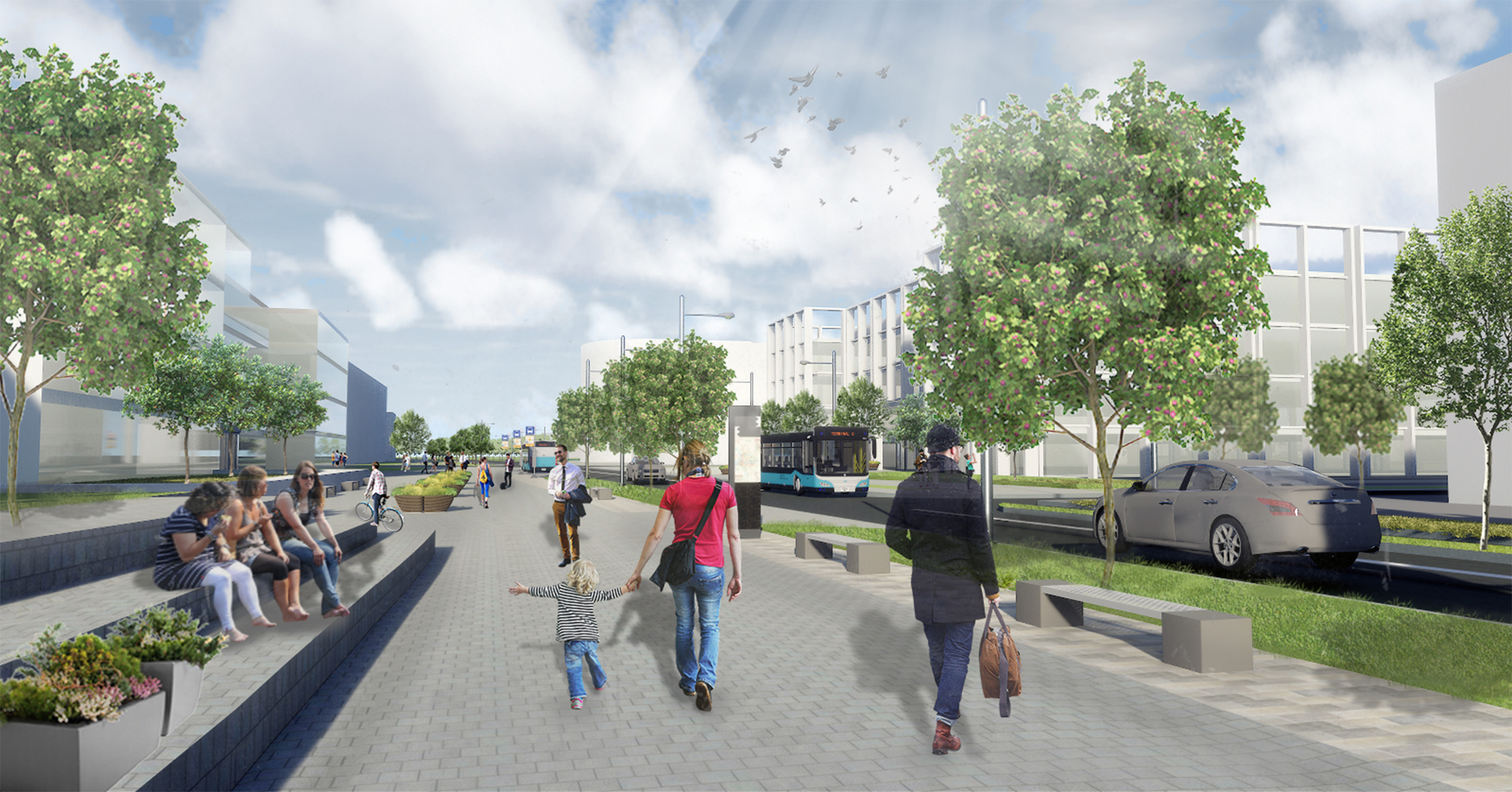Jim Young: Getting good infrastructure to create a sense of place
ICE Scotland chair, Jim Young, gives his regional take on ICE’s latest State of the Nation report on housing.

Concept art of the planned Ravenscraig redevelopment
Our homes are one of the most important parts of the way we live our lives. They’re where we live our family lives. They give us our sense of place.
There’s currently a great focus on the need for affordable housing in Scotland and the UK. This is both for new housing and for upgrading our existing housing stock to meet current and future needs.
The Scottish Government has committed to spending over £3.3 billion to deliver at least 50,000 affordable homes, of which 35,000 will be for social rent, by March 2021 as part of More Homes Scotland.
However, while the houses themselves are important, the economic infrastructure surrounding and serving them must not be overlooked.
These physical assets, such as transport, water, power, waste and digital communications all play an essential part in building a sense of place. Indeed, a Shelter Scotland report identified that infrastructure challenges are amongst the greatest risks to the achievement of the More Homes Scotland targets.
The Institution’s 2019 State of the Nation report highlighted the way in which housing and infrastructure need to be better aligned, planned, financed and delivered to ensure that, not only do people have places to live but that communities continue to thrive.
Continuing important funding streams
Scotland’s ambitious housebuilding programme has been running from strength to strength. The financial support from the Housing Infrastructure Fund, Rural Housing Fund and Islands Housing Fund have played an indispensable role in ensuring the programme’s success to date.
As ICE recommends in the report, committing to continue these funding streams beyond their current 2021 end date must happen if this momentum is to continue.
The current Scottish system of National Strategic Planning, Local Authority Development Planning and the local Planning Procedures are all established.
There will be change with the introduction of the recently passed Scottish Planning Bill, which introduces local place plans that planning authorities will be legally required to take into account and a duty for councils to work together on regional spatial strategies, with the aim being to make development more strategic and sustainable.
However, the system will need to focus longer and harder on what infrastructure is needed to support and promote housing and will require appropriate resourcing and investment to be effective.
The proposed Infrastructure Levy may be an integral part of this, but the regulations should now be published for consultation. This isn’t just about creating new roads and utility services to expanding greenfield sites.
Already in Scotland at the likes of Ravenscraig, one of the largest brownfield sites in Europe, housing has played a major part in the masterplan, but a vital component in this regeneration is the reconstruction of the original industrial infrastructure to meet the needs of homes and business premises now growing on the site.
Infrastructure investment will be key to releasing many more urban sites for regeneration for the foreseeable future.
Future-proofing our homes now
The Institution’s report also made recommendations across different areas of planning, funding and futureproofing, which policymakers and industry alike in Scotland should take note of.
One particular point that we must all consider is around future-proofing our homes now.
Sustainability is a vital issue that’s tied up with housing and infrastructure.
How we generate electricity is changing and will continue to change. Continual investment in distribution is essential to ensure that our homes are connected to sustainable and resilient power supplies. If the use of electric vehicles is to grow, the provision of charging facilities needs to be planned.
Wider than this, how we travel and how we communicate will change and our roads and public transport systems need to be ready for this, as does our connectivity systems.
Sustainability within our water and wastewater systems will be more important than ever. The impact of climate change will need to be considered, monitored and taken cognisance of in our future infrastructure planning.
While the Scottish Government, local authorities, professionals and communities probably recognise the need for change, the current planning practice isn’t delivering the best outcomes.
The 2019 ICE State of the Nation Report – Housing & Infrastructure sets out recommendations that focus on the key issues for improvement. Within all the other social considerations for the future, we need to act now to ensure that the communities we create for the future work and provide the connectivity and that sense of place we need.









